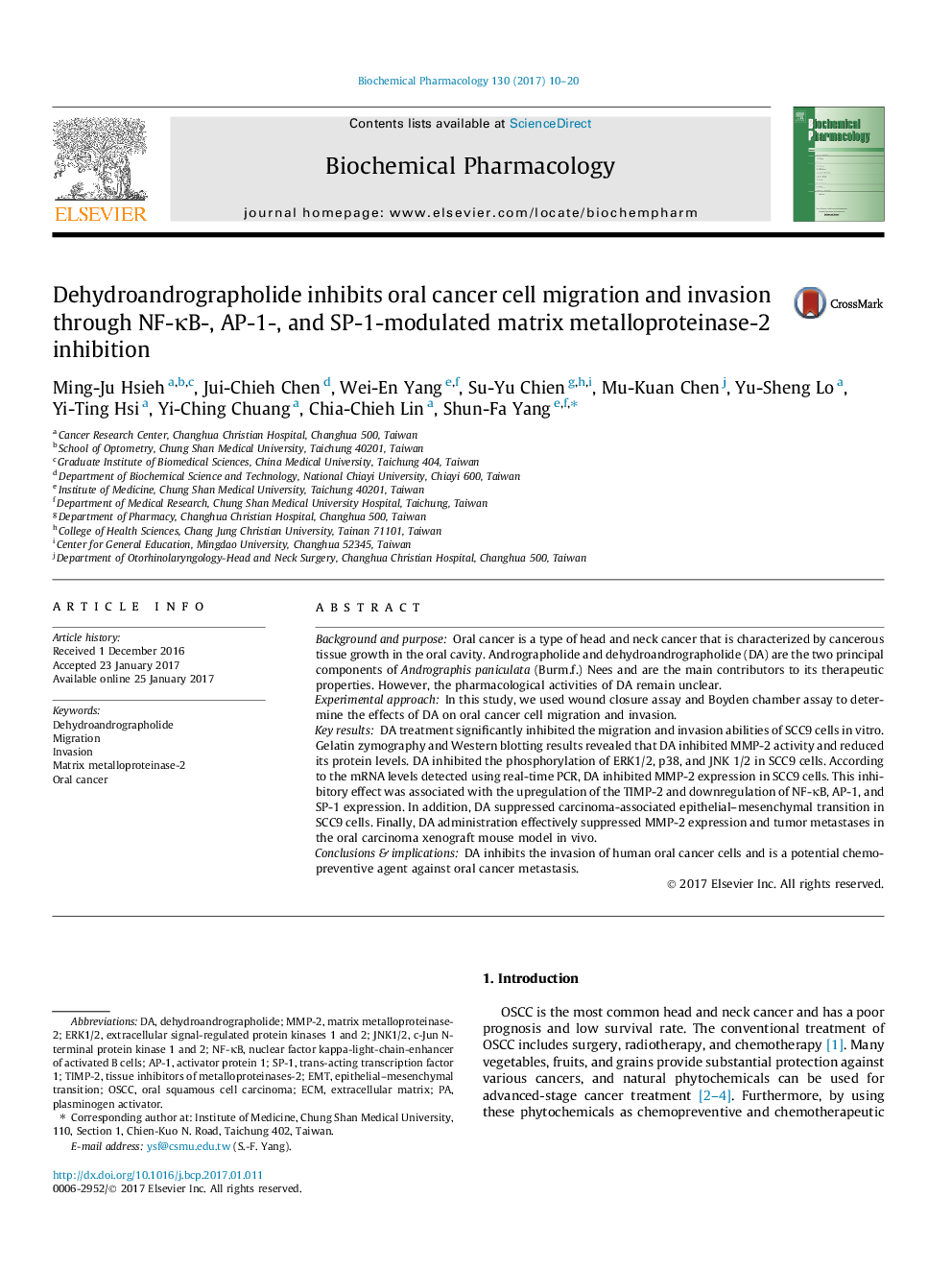| Article ID | Journal | Published Year | Pages | File Type |
|---|---|---|---|---|
| 5552231 | Biochemical Pharmacology | 2017 | 11 Pages |
Background and purposeOral cancer is a type of head and neck cancer that is characterized by cancerous tissue growth in the oral cavity. Andrographolide and dehydroandrographolide (DA) are the two principal components of Andrographis paniculata (Burm.f.) Nees and are the main contributors to its therapeutic properties. However, the pharmacological activities of DA remain unclear.Experimental approachIn this study, we used wound closure assay and Boyden chamber assay to determine the effects of DA on oral cancer cell migration and invasion.Key resultsDA treatment significantly inhibited the migration and invasion abilities of SCC9 cells in vitro. Gelatin zymography and Western blotting results revealed that DA inhibited MMP-2 activity and reduced its protein levels. DA inhibited the phosphorylation of ERK1/2, p38, and JNK 1/2 in SCC9 cells. According to the mRNA levels detected using real-time PCR, DA inhibited MMP-2 expression in SCC9 cells. This inhibitory effect was associated with the upregulation of the TIMP-2 and downregulation of NF-κB, AP-1, and SP-1 expression. In addition, DA suppressed carcinoma-associated epithelial-mesenchymal transition in SCC9 cells. Finally, DA administration effectively suppressed MMP-2 expression and tumor metastases in the oral carcinoma xenograft mouse model in vivo.Conclusions & implicationsDA inhibits the invasion of human oral cancer cells and is a potential chemopreventive agent against oral cancer metastasis.
Graphical abstractDownload high-res image (121KB)Download full-size image
